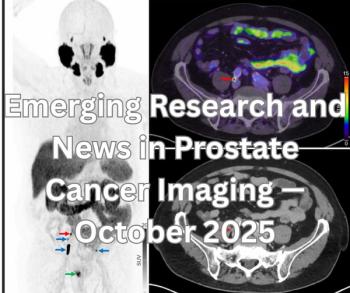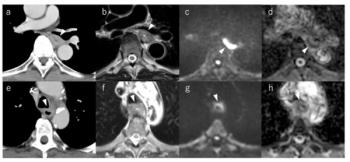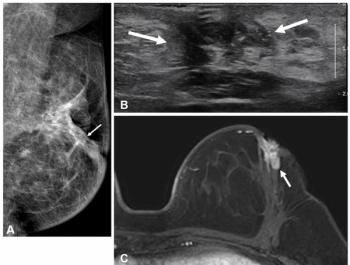
Breast MR boosts detection of ductal carcinoma in situ
MR imaging has demonstrated a high sensitivity for detecting ductal carcinoma in situ, and it could play a complementary role to mammography in finding and evaluating this very common type of cancer, according to a study in The Breast Journal.
MR imaging has demonstrated a high sensitivity for detecting ductal carcinoma in situ, and it could play a complementary role to mammography in finding and evaluating this very common type of cancer, according to a study in The Breast Journal.
Ductal carcinoma in situ accounts for 20% of all breast cancer and from 30% to 50% of all mammographically detected cancer. It is possible to detect DCIS with mammography if it is accompanied by calcifications, but an estimated two-thirds of DCIS cases are noncalcified.
Researchers at Memorial Sloan-Kettering Cancer Center in New York City found that MRI's sensitivity for DCIS was 88% versus just 27% for mammography (Breast J 2005;11[6]:382-390). In previous studies, MRI's sensitivity for DCIS ranged from 20% to 95%. The wide range may be due to differences in interpretation and imaging techniques, according to the researchers.
"We think it is very important to use high resolution imaging technique because of the better diagnosis of DCIS when compared to other studies using lower resolution technique in the detection of DCIS," said lead author Dr. Jennifer H. Menell, now at Mt. Kisko Medical Group.
Menell and colleagues retrospectively reviewed records of women who had undergone both MRI and mammography prior to surgery over the course of two years. The patient population had a high incidence of breast cancer, and studies were reviewed by highly experienced breast imaging specialists.
There were 39 sites of pure DCIS in 33 breasts of 32 women. Of the 33 breasts, DCIS was detected by MRI alone in 21 cases (64%), versus only one case for mammography alone (3%). It was picked up by both MRI and mammography in eight (24%), and in the remaining three cases (9%), DCIS was missed by imaging and confirmed on surgery.
About 90% of DCIS detected on mammography is calcified, which suggests that DCIS is vastly underreported, Menell said. While DCIS may have some calcified and some noncalcified areas, mammography is less able to pick up the noncalcified areas and therefore less useful in staging DCIS. MRI could help in a complementary role for detection and staging of DCIS, according to the researchers.
In an accompanying editorial, Dr. Steven E. Harms, director of imaging research at the University of Arkansas for Medical Sciences, noted that higher resolution is particularly important with DCIS because of the way the MR signal from the cancer (bright) and signal from the normal surrounding tissue (dark) interact when volume averaging is applied.
Volume averaging displays each voxel of information as an average of the two contrasts. In the case of DCIS, which is surrounded by and intermixed with normal tissue, the bright signal tends to get "averaged" into a nondetectable neutral signal. Higher resolution decreases voxel size, which minimizes overlap with surrounding tissue and increases the contrast of the cancer.
Harms also noted that Menell's improved sensitivity came from her reliance on anatomic diagnosis rather than on dynamic wash-out data. He cited a National Institutes of Health study whose temporal resolution exceeded methods typically employed in current clinical practice. Yet the study showed only 20% sensitivity for DCIS using the wash-out pattern. In the current study by Menell et al, only about a third of the DCIS cases seen on MRI displayed a wash-out pattern.
"If dynamic imaging alone is used, DCIS cannot be reliably diagnosed," Harms said.
Newsletter
Stay at the forefront of radiology with the Diagnostic Imaging newsletter, delivering the latest news, clinical insights, and imaging advancements for today’s radiologists.
































